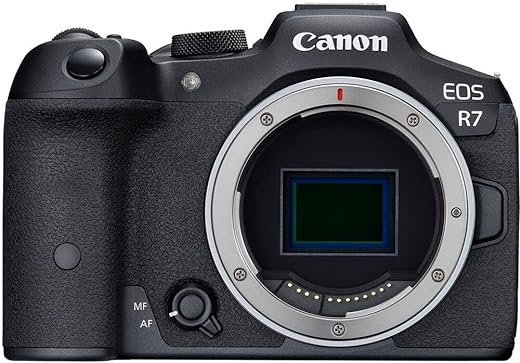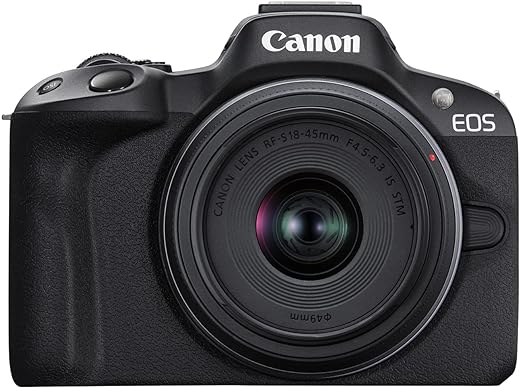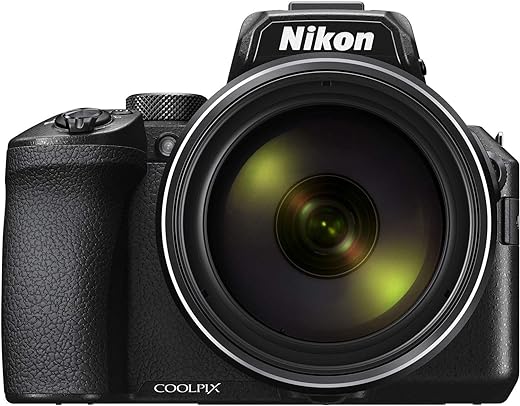Choosing the right photo editor can be a challenge. Adobe Lightroom and Luminar Neo are two top contenders in 2024. This article compares them, highlighting features, ease of use, and value.
Keep reading for insights that can guide your choice.
Key Takeaways
- Lightroom costs $9.99 a month and is great for organizing lots of photos. It also works well on phones and computers.
- Luminar Neo can be bought once without monthly fees. It has AI tools to quickly change photos, like fixing skies or faces easily.
- Lightroom helps fix details with tools like healing options, while Luminar Neo uses AI for fast edits.
- Both programs work on Windows and macOS, but they offer different things. Lightroom is good for detailed editing and working with other Adobe apps. Luminar Neo is easier for beginners to learn because it’s simpler.
- If you don’t like paying every month, Luminar Neo might be better because of its one-time price. But if you want ongoing updates and cloud storage, Lightroom’s monthly plan could be worth it.
Lightroom and Luminar Neo Features Overview

Lightroom shines with its powerful tools for editing and organizing photos. Luminar Neo steps up with cutting-edge AI features, making quick edits a breeze.
Core Features of Lightroom
Adobe Lightroom shines with its subscription-based model, starting at $9.99 USD/month, drawing in photography enthusiasts who need a robust photo editing platform. It stands out for advanced metadata handling and custom tags, ensuring users can sort and access their images quickly.
The included mobile application offers cloud storage along with synchronization of files and edits across devices, making it easy to work from anywhere. Lightroom also boasts a unique feature allowing the creation of virtual copies for experimenting without altering the original file.
The software recently embraced AI technology, introducing tools like AI masking that significantly reduce time spent on complex edits. These features cater to both novice and experienced photographers looking for an efficient workflow encompassing everything from capture to post-processing.
With extensive tools supporting every step of the photographic process, Adobe Lightroom ensures users have what they need to bring their visions to life.
Core Features of Luminar Neo
Luminar Neo shines with its AI-powered tools, making photo edits faster and easier. It supports layers for complex editing, allowing photographers to stack adjustments without losing original image quality.
The software stands out with unique filters like AI Sky Replacement and AI Portrait Enhancer, instantly improving photos with minimal effort. Users have access to 120 presets, 50 overlays, 35 skies, and 40 LUTs for creating striking effects in their images.
With over a million users worldwide, Luminar Neo has gained positive reviews for its user-friendly approach to photo editing. This massive toolbox catmphotographers edit raw files efficiently while exploring creative possibilities through extensions that add new features when needed.
Its layer support offers flexibility in managing various edits simultaneously. Let’s now look into how these two applications differ in user experience.
Comparison of User Experience

Lightroom and Luminar Neo give you different feels when editing photos. Lightroom is like a well-organized desk, while Luminar Neo offers magic tricks with AI for quick fixes.
Interface Differences Between Lightroom and Luminar Neo
Luminar Neo delights with a user-friendly layout, boasting basic presets across three workspaces: Catalog, Presets, and Edit. This design makes photo editing swift and straightforward.
Lightroom Classic challenges users with its complex interface, requiring more time to master its features. Luminar Neo shines in simplicity, ensuring quick module switching although AI tools may slow the process down a bit.
Next up is exploring how beginner photographers handle the learning curve of both Lightroom and Luminar Neo.
Beginner Learning Curve for Lightroom and Luminar Neo
Lightroom Classic takes time to master. Its catalog feature and tools can be tricky for new users. Many find it slow to import files too. This makes the learning path steep if you are just starting out with photo editing software.
Luminar Neo, on the other hand, is known as the best tool for beginners. It offers a simpler way to edit photos compared to Lightroom. New users enjoy how easy it is to start using Luminar Neo’s features without feeling overwhelmed.
This difference in ease of use can make a big impact if you’re new to editing photos.
File Management and Organization Tools
Keeping your photos in order is key. Lightroom uses catalogs and collections, while Luminar Neo opts for albums and folders—each has its way of making sure you find your snapshots fast.
Lightroom’s Organizational Features
Lightroom’s organizational tools stand out for their effectiveness. The system lets you catalog thousands of photos with ease. You can add advanced metadata and custom tags to each image, making it simple to find exactly what you’re looking for later.
With smart previews, photographers quickly sift through RAW files without slowing down their workflow.
This tool supports a wide array of file formats including JPEGs and TIFFs, ensuring all your work stays organized in one place. Next up, let’s explore how Luminar Neo approaches organization differently.
Luminar Neo’s Organizational Features
Luminar Neo makes managing photos easy. It has a catalog function that keeps all your edits in one place. Even though it lacks keyword tagging and IPTC metadata features, organizing images is still straightforward.
Luminar Neo fits well with Adobe Lightroom workflows, allowing editors to send changes back to the Lightroom catalog seamlessly.
The software excels in simple yet intuitive file management. Users can quickly find and sort their work without getting lost in complex menus or options. This simplicity ensures photographers spend more time editing and less on sorting through their library.
Luminar interacts well with Lightroom workflows; edits in Luminar return to the Lightroom catalog.
Editing Capabilities and Tool Performance
Editing pictures gets easier with the right tools. Lightroom brings powerful editing features, while Luminar Neo shines with its AI magic.
Advanced Tools in Lightroom
Lightroom packs advanced tools that truly stand out. Superior healing options let photographers fix flaws easily. The sharpening tool makes photos crisp and clear, while the vignette effect adds depth.
Lens corrections improve shots quickly. Lightroom’s recent updates brought AI masking tools, enhancing images with smart selections. With these features, creating virtual copies becomes a breeze, allowing for non-destructive edits on multiple versions of a photo.
Performance sees a boost from user feedback, making Lightroom faster and more responsive than before. Photographers can rely on it to handle large collections without slowing down—essential for professionals working with high volumes of images in Adobe Lightroom Classic or Creative Cloud platforms.
This blend of speed and power ensures that editing tasks are completed efficiently, giving users more time to focus on creativity rather than waiting on software to catch up.
AI Tools in Luminar Neo
Luminar Neo shines with AI tools that transform photos quickly. AI Sky Replacement changes skies in pictures with a click. AI Portrait Enhancer makes faces look their best without hard work.
These features use sliders making editing easy and fast for everyone. But, using many AI tools at once can slow down the process.
This software includes Orton Effect and Image Radiance, adding magic to shots easily. With these options, photographers create stunning effects in seconds. They don’t need deep editing knowledge thanks to simple slider controls.
Luminar Neo helps turn good photos into great ones efficiently, proving its worth in every edit.
Software Integration and Workflow Efficiency
Choosing the right photo editor affects how well it works with other apps you use. Lightroom and Luminar Neo both offer paths to make your editing flow smooth, but they fit into different digital eco-systems.
Compatibility with Other Applications
Luminar Neo works well with Adobe’s Lightroom, acting as a plugin. This means users can add it to their current setup without any problems. They keep using Lightroom for organizing and basic edits, then switch to Luminar Neo for its AI tools when needed.
Both programs run on Windows and macOS, making them easy to fit into most photographers’ workflows.
Adobe also offers a mobile app that syncs with Lightroom on desktops, including cloud storage and RAW camera access. This feature is great for editing on the go with devices like iPhones and iPads.
On the other hand, Luminar Neo’s companion app brings fewer features but still helps in quick photo adjustments from smartphones or tablets. So, whether you’re working from a Mac Mini at home or an Android phone while traveling, both editors provide solutions but vary in depth and freedom across platforms.
Streamlining Workflow in Lightroom and Luminar Neo
After looking into how they play with other tools, it’s clear both Lightroom and Luminar Neo focus heavily on making work faster for photographers. Smart Previews in Lightroom speed up moving through RAW files.
This is a big win for anyone who deals with large image files regularly. On the flip side, Luminar Neo impresses with its AI filters that streamline editing tasks greatly.
The goal is to turn data into information, and information into insight.
AI slows down Luminar Neo when switching modules but helps in specific edits where precision counts. Yet, Lightroom stays ahead in areas like printing settings due to its superior export options.
Both editors aim at saving time but pick their battles differently – Lightroom optimizes early steps while Luminar Neo shines brighter later in the process.
Pricing Structure and Overall Value
In photo editing, how much you pay matters as much as what you get. Lightroom offers a monthly fee plan; Luminar Neo sells for a one-time price….
Subscription Options Versus One-time Purchase
Luminar Neo lets you choose how to pay. You can buy it once and keep it forever or pick a subscription plan. Lightroom only offers subscriptions starting at $9.99 per month, including Photoshop and 1TB cloud storage for mobile users.
This means if you dislike recurring costs, Luminar Neo might suit you better with its one-time purchase option.
Costs matter in picking the right tool for photo editing. Lightroom’s approach ties users to monthly payments but gives continuous updates and cloud space. Luminar Neo’s one-off payment is great for those not wanting ongoing fees but still needing powerful editing features.
Now, let’s look into comparative cost analysis to see which offers more value.
Comparative Cost Analysis
Lightroom offers a subscription model, starting at a monthly fee. This includes access not just to Lightroom CC but also to Adobe Photoshop and cloud storage services. For those deeply invested in photography, this bundle provides exceptional value for less money over time.
On the other hand, Luminar Neo presents a one-time purchase price, appealing for photographers wary of ongoing costs. Despite its upfront affordability, users might find extra costs for updates or add-ons.
Choosing between subscription or one-time purchase affects long-term spending on photo editing tools.
Both options come with their ups and downs depending on what you need. If constant updates and integration with other Adobe Suite applications are key for your workflow, Lightroom’s annual cost could be justified.
However, if avoiding recurring fees is crucial and simpler AI-driven editing meets your needs, Luminar Neo’s initial price might seem more attractive despite potential future expenses for upgrades or additional features.
Conclusion
Choosing between Lightroom and Luminar Neo in 2024 depends on your needs. For those needing deep cataloging or who manage thousands of photos, Lightroom stands out with its advanced organizing tools.
Its healing tool and lens corrections also offer superior results. On the other hand, Luminar Neo shines for newcomers seeking ease without sacrificing power in editing software. Its user-friendly interface and unique AI capabilities simplify photo editing tasks impressively.
Both editors excel, but your preference for complexity or simplicity will guide the better choice for you.
FAQs
1. Which performs better on Macs, Lightroom or Luminar Neo?
Lightroom and Luminar Neo both shine on Macs… iMacs, MacBook Air, MacBook Pro, you name it. They’re optimized for macOS. But here’s the deal: if you crave speed and smoothness, AMD Ryzen processors in some Mac models give Luminar Neo an edge.
2. Can I edit high dynamic range images with these editors?
Absolutely! Both tackle high dynamic range (HDR) images like pros. Aurora HDR often pairs with Skylum’s Luminar Neo for a punchy effect… Lightroom? It’s got its own HDR magic up its sleeve.
3. Subscription-based models: what’s the scoop?
Here we go: Adobe loves subscriptions – pay monthly for Lightroom access… On the flip side, buy Luminar Neo once and it’s yours forever—no ongoing fees.
4. How do they handle raw files from different cameras?
Both eat RAWs for breakfast—Skylum’s software even has Capture One in its corner for extra muscle… Whether you shoot with an iPad Pro or something fancier, your bases are covered.
5. Mobile editing – which app takes the cake?
If editing on-the-go is your thing, Lightroom dashes ahead with mobile apps for subscribers… Airdrop photos from your iPhone to your MacBook Air? Edit them there and then? Lightroom makes it seamless.




